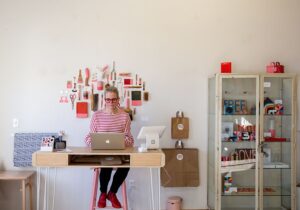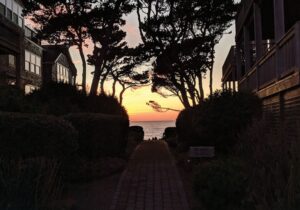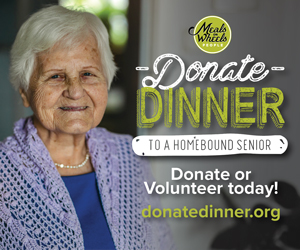Whether the world goes boom or bust, there are a few things you can rely on more than your ability to create something with your own hands. But a new community of women is taking that idea even further, drawing on their knowledge of traditional domestic arts to empower a new generation of makers. Pretty is great. Useful is dandy. But for those who choose to make, the handmade object is becoming something more: a powerful antidote to the disconnected life. Meet the Oregon women who are teaching us how — and a new why.
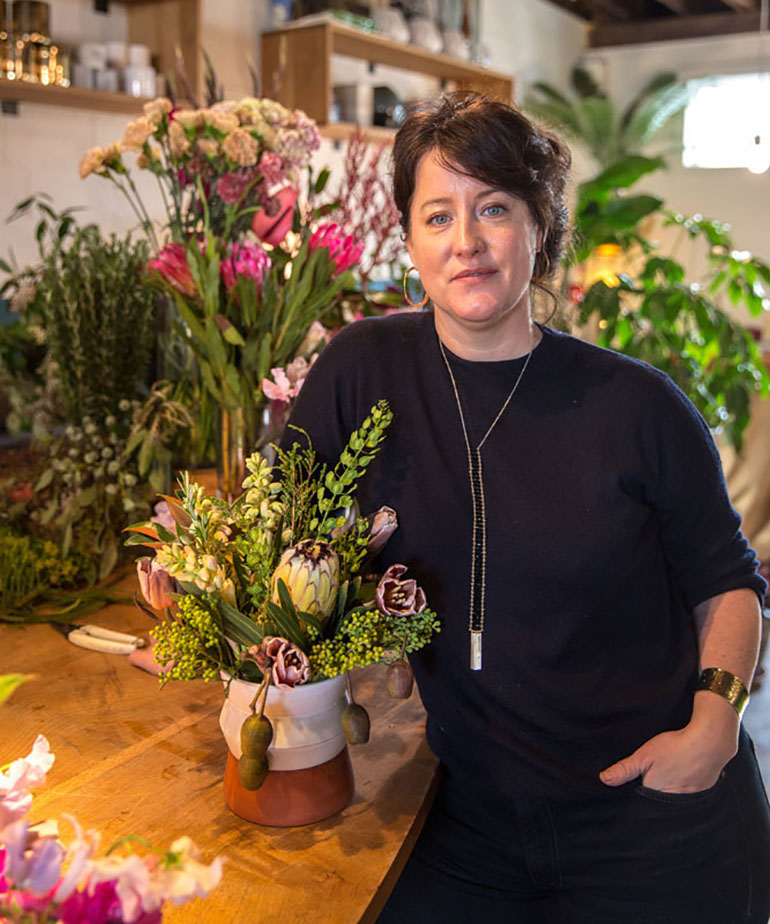
The New Domestic Craft: Floral
Naomi Pomeroy | Colibri
Grace space
Naomi Pomeroy is household name in national foodie circles, but the self-taught chef understands at a personal level just how important it is to follow your creativity. Early on in her career as chef at her James Beard award-winning restaurant, Beast, Pomeroy started making a nightly floral arrangement to grace the chef’s counter. Even as she racked up accolades in the food world, Pomeroy had some other things on her mind. “Flowers,” said Pomeroy. “Even when I was being honored as the best new chef, an editor asked me what I’d do if I weren’t a chef, and I answered florist. I’ve always loved doing my own arrangements.”
Flower power
Pomeroy’s determination to explore creativity in all forms led to converting some existing office and creative space with the help of her husband, acclaimed Portland bartender and her partner at Expatriate, Kyle Linden Webster. The idea behind Colibri was to have a place where her passion could not only expand but also find some financial provenance. “The explosion of interest in floral art is happening everywhere,” Pomeroy said. “I think it’s because there is yearning to find the beauty in a world that can feel discouraging and stressful.” At Colibri, Pomeroy and her co-designer, Bianca Sparta, create edgy and floral-heavy arrangements that create a counterpoint to our busy lives with the stillness and beauty of nature. “It’s important to take the time to reflect on beauty — it’s like a form of self-care,” Pomeroy said.
Creativity blooms
The idea of not being stuck in a defined career path is tantamount to Pomeroy’s philosophy. “This is a very modern idea — the idea that we don’t need to wait until we’re home from our jobs or retired to pursue our true interests,” Pomeroy said. “We can be two or more things in our lives.” At Colibri, Pomeroy offers regular workshops sharing the meditative process of floral arranging. What’s she’s found most encouraging is the type of self-confidence participants leave with along with their arrangements. “Every time we do something where a lightbulb turns on, and we gain a new skill, we can take that joy and inspiration out into our daily lives,” Pomeroy says.
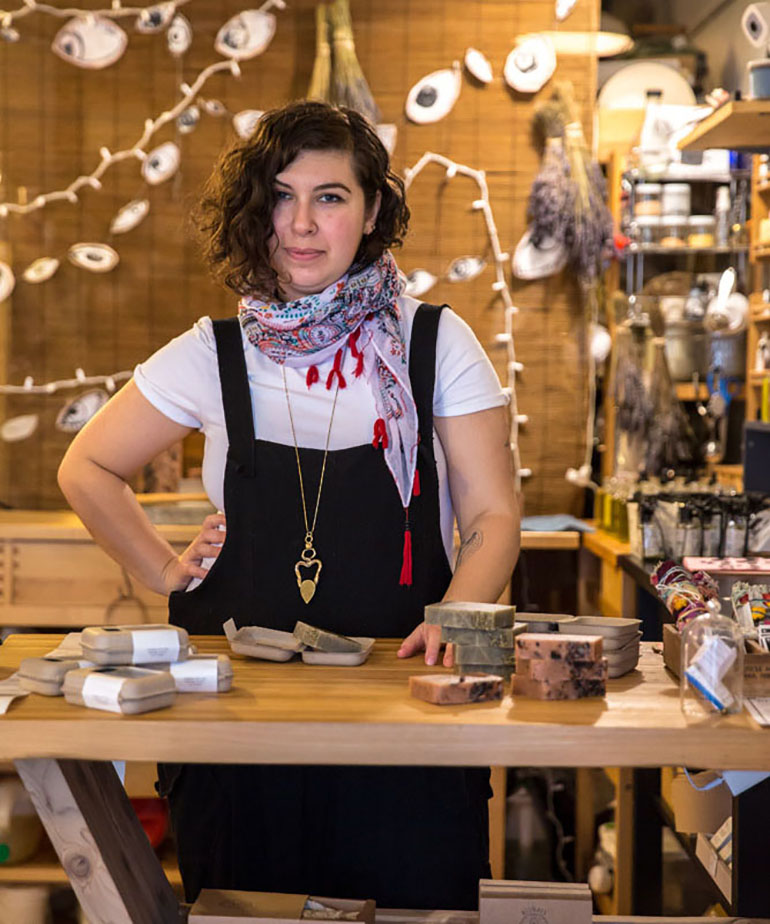
The New Domestic Craft: Self Care
Maria Vashakidze | Seagrape Bath & Body
Art is the way
Maria Vashakidze has always made things with her hands. “I never considered doing anything besides art,” said Vashakidze, a Russian-Jewish immigrant from Georgia. After finishing her degrees in painting and book arts, Vashakidze took her creative interest in the making of beautiful things and applied it to her other passions — personal-care rituals and connecting to people and place. The result is Seagrape Bath & Body, a brick-and-mortar store in Northeast Portland where self-care is philosophy and lifestyle.
Healing hands
Vashakidze started with an online apothecary to sell her handmade soaps and other body care products, but her studio space in Northeast Portland was open to the public. “People would come in and be fascinated by the labor and time that would go into making these things we take for granted every day,” Vashakidze said. Once she opened her retail shop, she made it a point to also open a community workspace where people could gather to make their own products for self-care or learn about self-care rituals. “It’s not about keeping these skills secret — we can all benefit from understanding the true cost of how things are made.”
Magic in the making
Vashakidze is dedicated to the idea of reclaiming ancestral skills as an anecdote to stressed and overworked modern lifestyles and as a way to take more responsibility for the way we consume resources. “Any time we hand-make something, it has a lot more value,” Vashakidze said. “You witness the alchemy. It becomes magical and charged with your labor of love.” Making things, she believes, gives people a sense of power against technology-induced loneliness. “Working with the hands — whatever that looks like — is an important counterbalance to the stagnant energy of this time.”
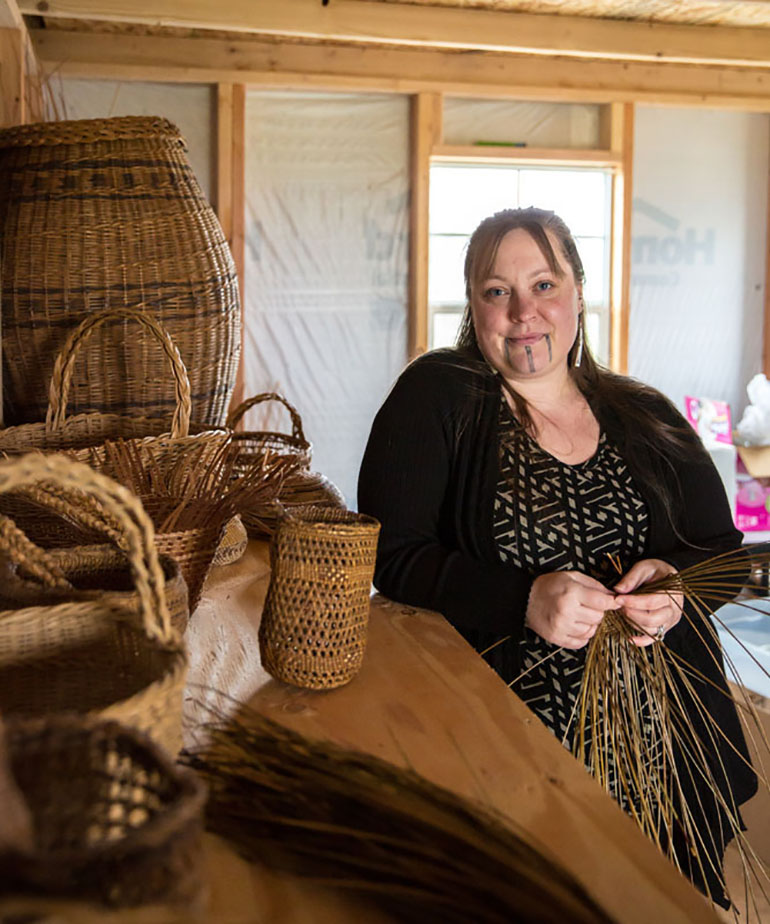
The New Domestic Craft: Weaving
Stephanie Craig | Kalapuya Weaving
Native artist
As a Native American who can pass as Caucasian in her rural Oregon farming community, Stephanie Craig has navigated complex stereotypes. “I loved my double life,” says Craig. “I was raised with deep pride and love for my ancestral background.” Craig spent weekends and holidays with her mother’s family on the Grand Ronde Reservation where the “old ways” weren’t old at all, and where elders taught her traditional Kalapuya basket-weaving techniques. “When my great aunts and grandmothers talked, it was always in the sense of the present, not the past. We do not consider ourselves a dead or dying culture. After all, we’re right here, aren’t we?”
Master weaver
When Craig headed to college at the University of Oregon, she took a job on campus at the Museum of Natural and Cultural History. Amusingly, there was a whole exhibit of baskets there from her family ancestry, including family photos — all mislabeled. It was this, and the museum’s tone of presenting the exhibition as some lost art, that galvanized Craig. “My family were the master basket weavers for our community in Grand Ronde. I felt it was my responsibility to continue that tradition and carry it forward.” From the U of O to the Smithsonian and back to the Oregon State Parks Department, Craig has pursued her credentials while preserving and curating the country’s Native American basket collections. A prolific weaver in her own right, she is dedicated to passing the art form on to Natives and non-Natives alike.
Maker culture
Craig has very clear philosophies around the importance of maker culture. “I think it’s what puts Oregon on the map,” Craig said. “There is a movement, a growing sense of wanting to find a connection to the land and to place — which as Native Americans we have always revered. I feel good about those who come to me as allies in this seeking — people who are looking for a richness of experience and living that our modern consumer culture lacks. There may be a new-age ‘hipster’ sheen to it, but it’s the right direction.”
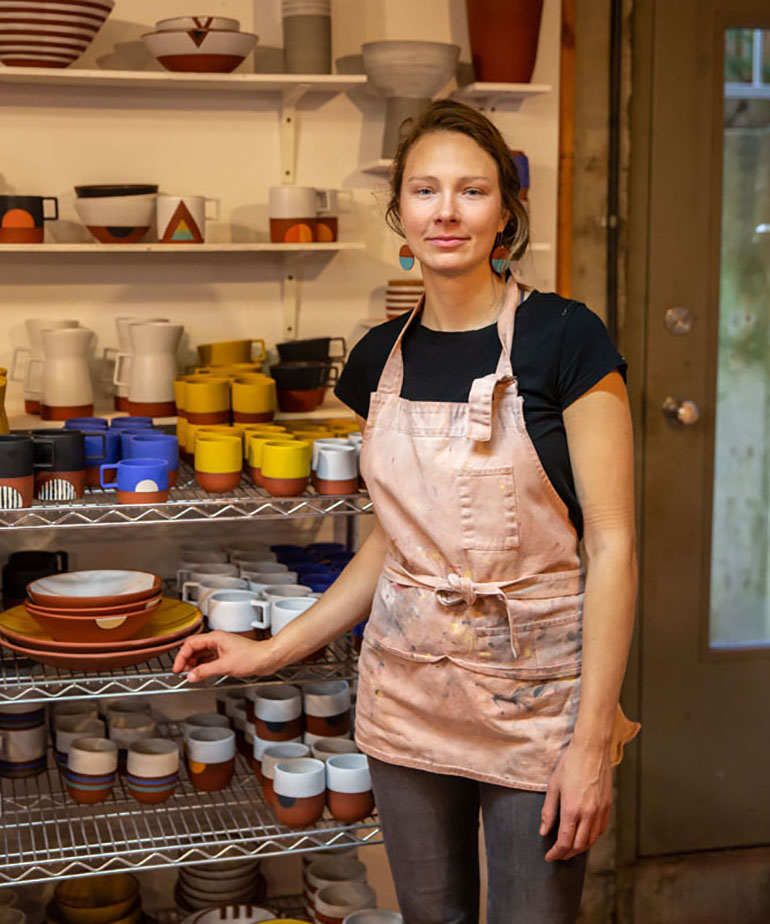
The New Domestic Craft: Ceramics
Sarah Wolf | Wolf Ceramics
The science of art
The daughter of a painter and a physicist, Portland native Sarah Wolf was always torn between art and science. “I always loved ceramics and making things with my hands, but I couldn’t picture myself making a real living off of it,” Wolf said. She studied geology but didn’t love the lab work, so she scrapped that and ended up out in the San Juan Islands with some friends who were homesteading. There, she discovered that hands-on living brought her a tangible satisfaction. “What you do with your hands has immediate effect and benefit,” Wolf said. She soon turned back to ceramics, taking up studies at the Oregon College of Art and Craft.
Mug shot
At Oregon College of Art and Craft, Wolf developed her popular bold geometrical graphics juxtaposed with raw clay aesthetic as well as her technical skill. It was the early days of social-media, and she had her first success with her “Mug Club,” a subscription-based ceramics package. It worked. Wolf was able to put herself through school while using the club as a place to vet ideas and learn how to scale production. “The greatest surprise to me was the community aspect,” Wolf said. “Here I was worried about being lonely as an artist, and suddenly, this community grew up around me.”
Handmade matters
Today, Wolf’s community happens at the full-time working studio Wolf Ceramics in Northwest Portland. Supporting her team of three potters is vital to her process, as is being transparent about the value of handmade objects. Wolf fosters a strong bond of camaraderie in her studio though collaboration and fair wages. “We are open with our customers about what goes into making these pieces and how that dictates pricing,” said Wolf. “Even for a buyer who doesn’t have a huge budget, investing with intention in a few, key everyday objects might bring them much more joy and connection than something off of an assembly line.”
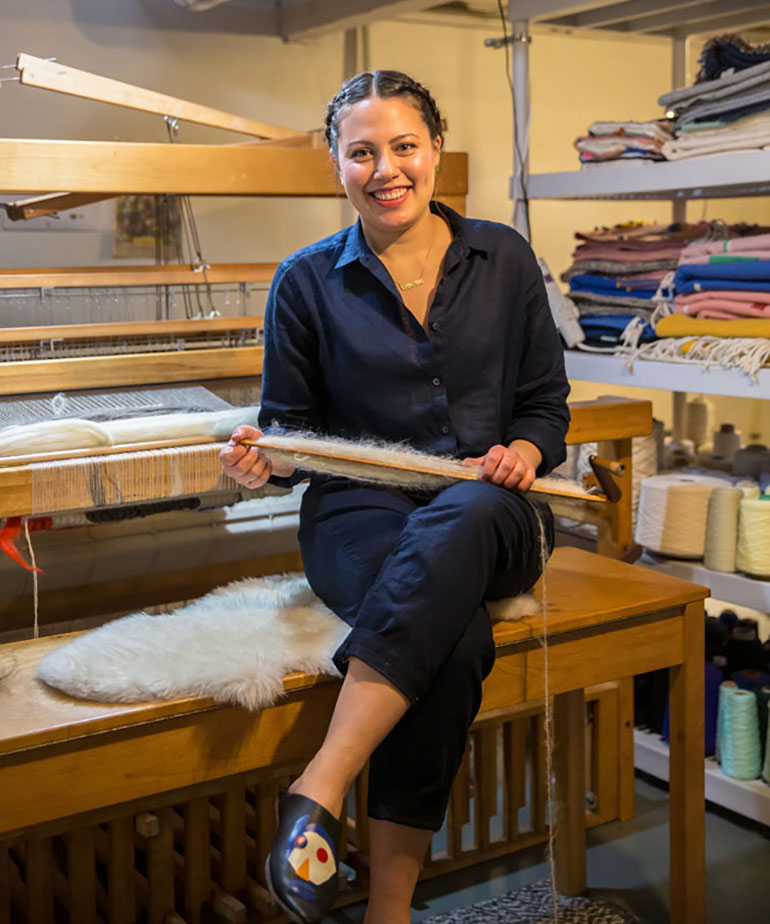
The New Domestic Craft: Textiles
Katherine Entis | Soft Century
Heritage maker
Katherine Entis first learned to use giant industrial handlooms while studying textile design at Rhode Island School of Art and Design. The artist, who comes from a long line of heritage makers — one grandma knit, the other is a sculptor and her mother is a painter — took well to the school’s hands-on approach to arts education. Later, even after she took full-time work as a color designer for Nike, Entis started hand-knitting at home, experimenting with designs for small home goods products. When she was ready, she took the leap and launched Soft Century, pillows and rugs with pops of color and textures made with natural fibers and dyes.
Looming large
In 2018, Entis scaled up her production from a one-woman production to a full-fledged home goods line of distinct woven rugs and pillows. Using multiple textures and colors in a single piece, Entis achieves her style as a visual “maximalist,” often starting with place as inspiration. “I’ll have an idea in my head of a specific place, like a landscape — even something fantastical, like from an old Looney Toons cartoon,” Entis said.
Value statements
Entis attributes the success of her line, and interest in her commiassioned works to a growing interest and respect for handmade crafts and sustainable materials and production. She has taken particular care in outsourcing the production of her line to a generations-old family-run workshop in Oaxaca. “More people have access and exposure to images of artisans making these types of traditional crafts like weaving and textiles,” Entis said. “Our understanding is driving an appreciation of what’s involved and what the true value of these items should be.”
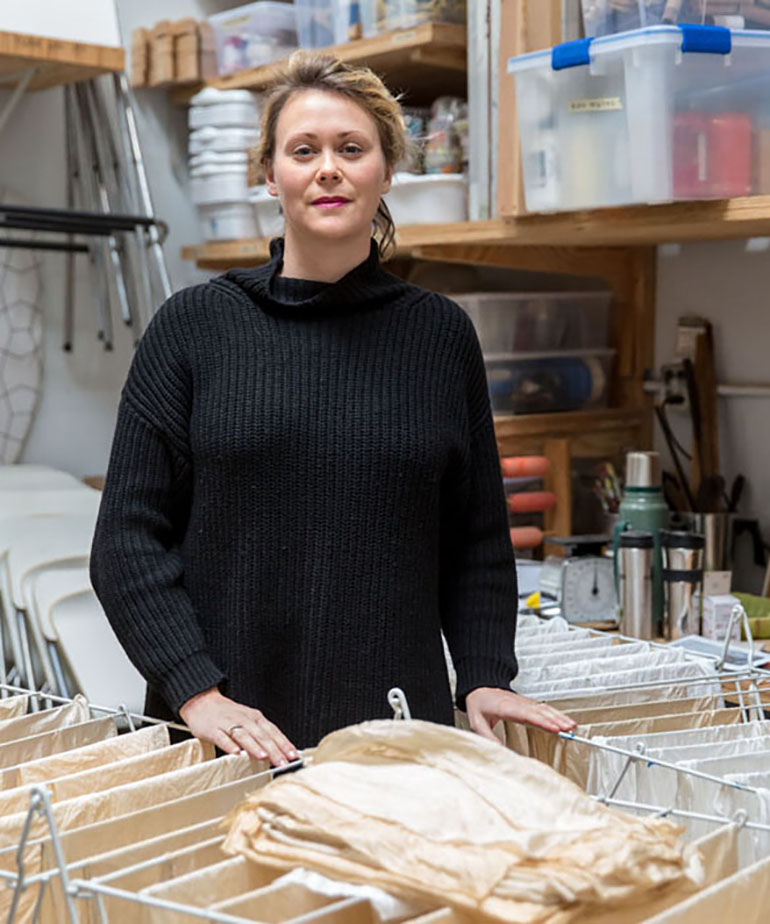
The New Domestic Craft: Education
Chelsea Heffner | Wildcraft Studios
Hands-on creativity
After graduating from the highly conceptual MFA in visual studies program from Pacific Northwest College of Art, Chelsea Heffner was eager to put the art theory books back on the shelf and get into the studio. “I wanted to explore how a hands-on approach, rather than a theoretical approach, could be made accessible to everyone, not just full-time students,” Heffner said. In 2007 she launched WildCraft Studio School, a place where adults can access creative, skills-based learning in traditional crafts.
Share and share alike
WildCraft, which now offers more than 100 workshops and intensives every year in Portland and surrounding areas, has developed a robust program of what Heffner calls place-based traditional craft. She works directly with artisans and folk experts, helping them develop course curricula designed for working adults. “I want to provide a new format to bring these traditional crafts in our contemporary lives,” Heffner said. “My intent is to be nimble and offer people a format to learn traditional skills in a way that is approachable and sustainable.”
#Maker
Heffner is encouraged by the proliferation of DIY studios and trendy hashtags around all things #maker and sees the growth in skills-based adult education opportunities as part of a larger push-back on consumer culture. “The word ‘craft’ is on people’s minds,” Heffner said. “Making something yourself creates meaning and significance — it starts a conversation. It’s a starting point for people to think about ecology, sustainability, relationship to place and why these things matter. Starting that conversation is a step in the right direction — for ourselves, and for the world we share.”




